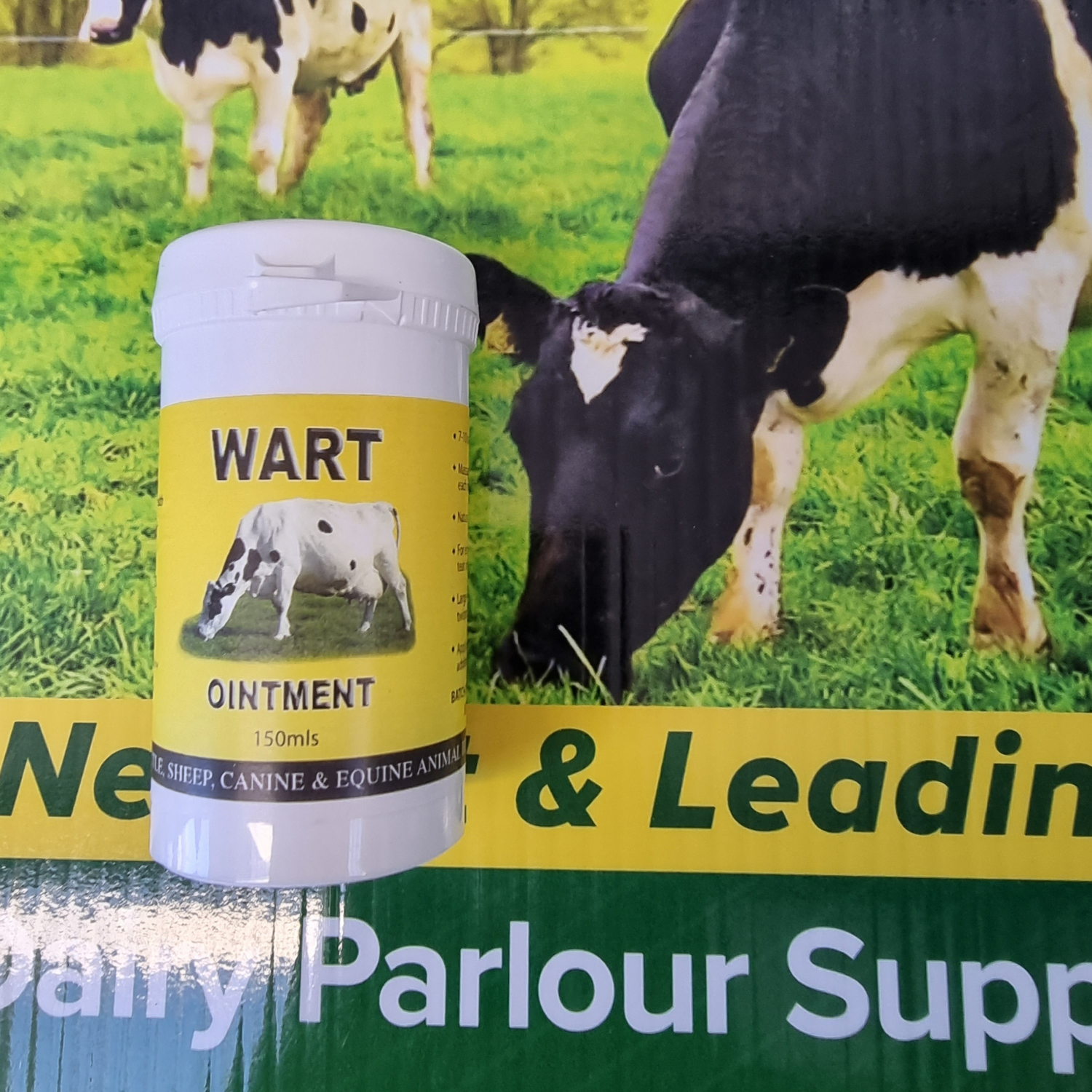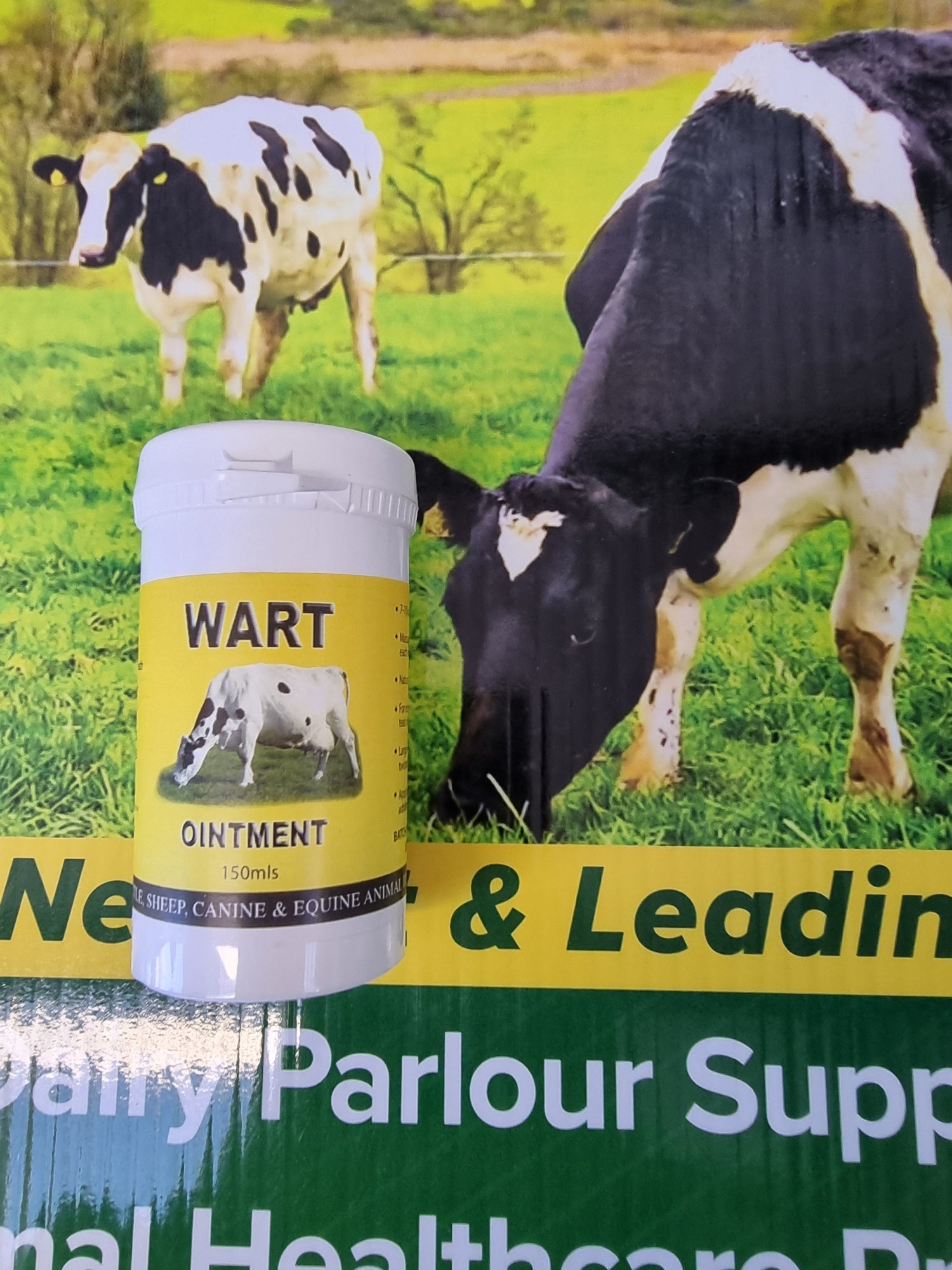Wart Oinment for Cows NOVAVET
- Regular price
-
£15.00 - Regular price
-
- Sale price
-
£15.00
WART OINTMENT
For Successful Wart Removal Softens
Warts and dries up cluster warts. For large warts, it deadens the root which makes it easier to remove. Again like any ointment will work faster with teat tape as this keeps the ointment working on the affected area. Also when active the ointment will sting the teat and the teat tape prevents the animal from licking it off. For light string warts on Heifers or warts on dry stock (Angleberries) use Novavets W.A.C. spray.
Contains: Salicylic Acid in a silcocks base.
What are Warts?
Warts in cattle are caused by the contagious virus papillomavirus. Four types of the virus are known to produce warts on cattle. Calves are most susceptible with few cases of warts seen in cattle over 2 years of age. Warts appear 1 to 6 months after infection with the virus. Not all animals carrying the virus will have warts. lt can be transmitted from the unapparent carrier to the susceptible animal. Warts are usually more of an appearance problem than a physical problem. Heifers suffering from cluster warts may lead to painful milking. The virus spread is unpredictable. Some animals appear to show some resistance. Any weakening of the teat skin from fly bits, scratches etc. may allow the virus to enter the skin.
Delivery Info
At Country Farm Supplies our aim is provide the best service we can and seamless delivery process for all our customers.
All other product delivery:
- Northern Ireland: £6
3-5 business days for all in-stock products. Free shipping over £149 spend* - United Kingdom: £6
3-5 business days for all in-stock products. No customs charges incurred. Free shipping over £149 spend* - Europe: from €26
5-10 business days for all in-stock products.
Please note some exceptions apply (example bulky items) and surcharges may be applied at during or after checkout. Please find all details of our Delivery & Collection here.
Returns Policy
We have a 14-day return policy. Please read our full Returns Policy here.
Couldn't load pickup availability



Wart Oinment for Cows NOVAVET
- Regular price
-
£15.00 - Regular price
-
- Sale price
-
£15.00



